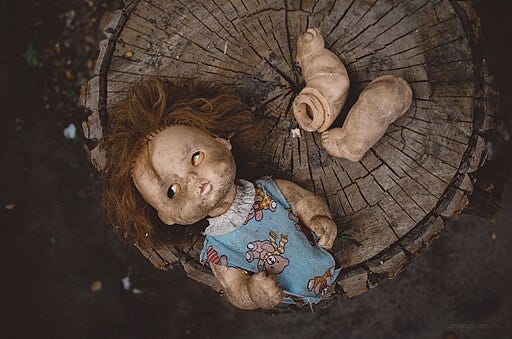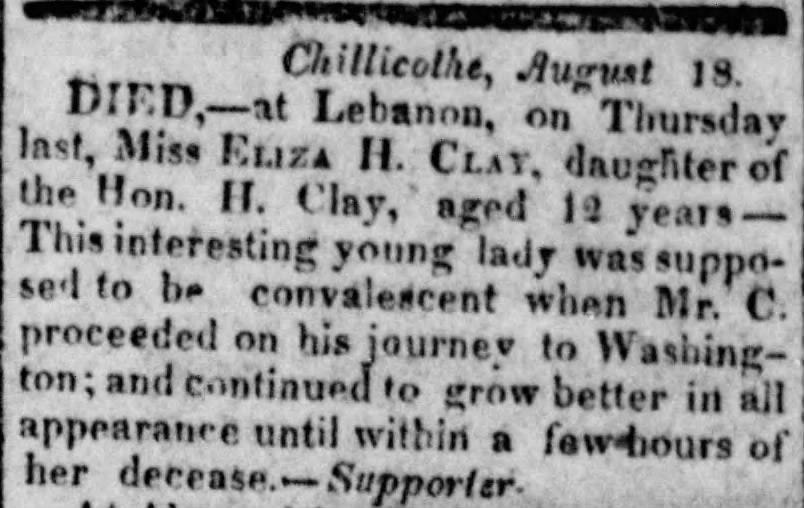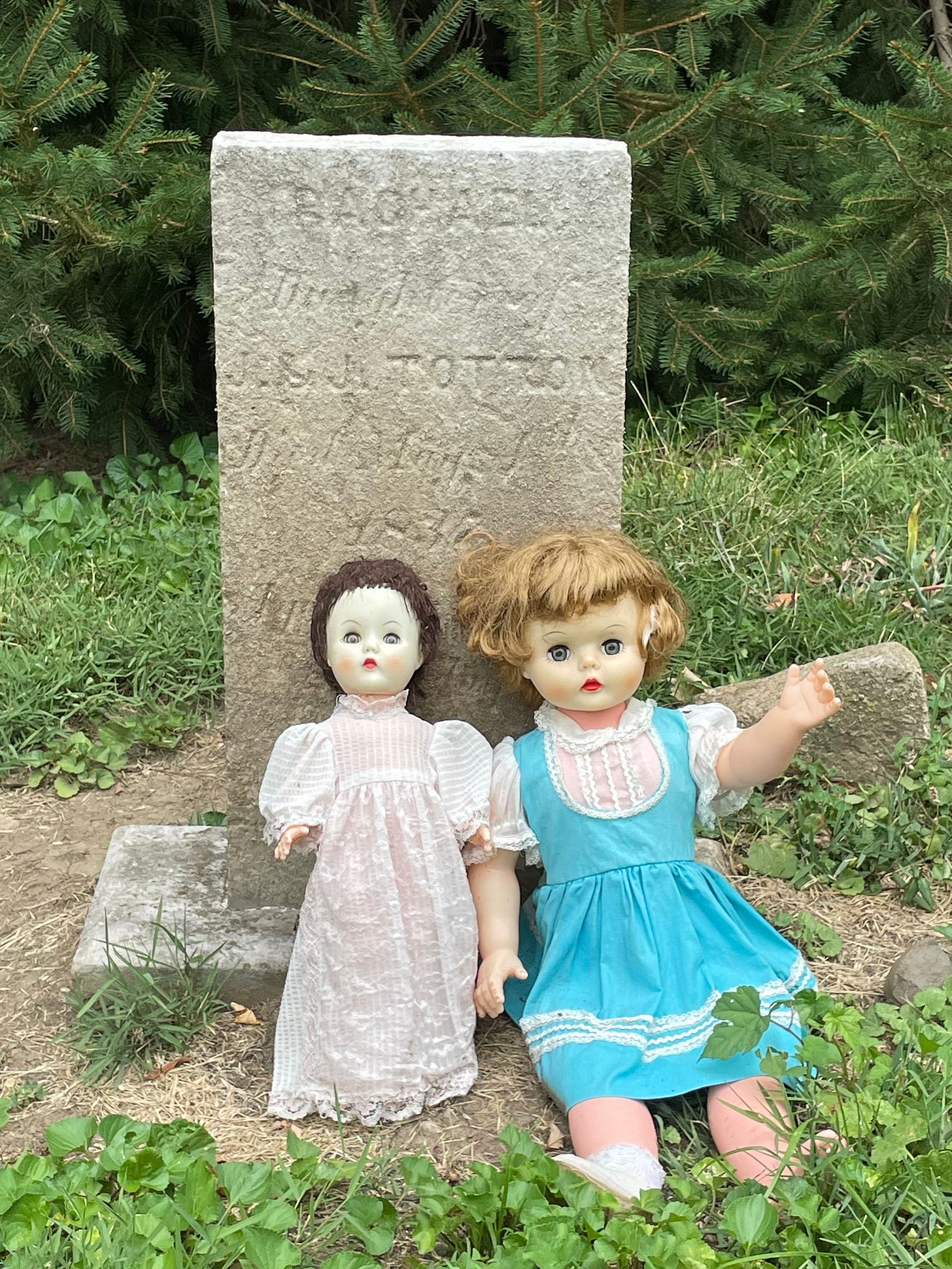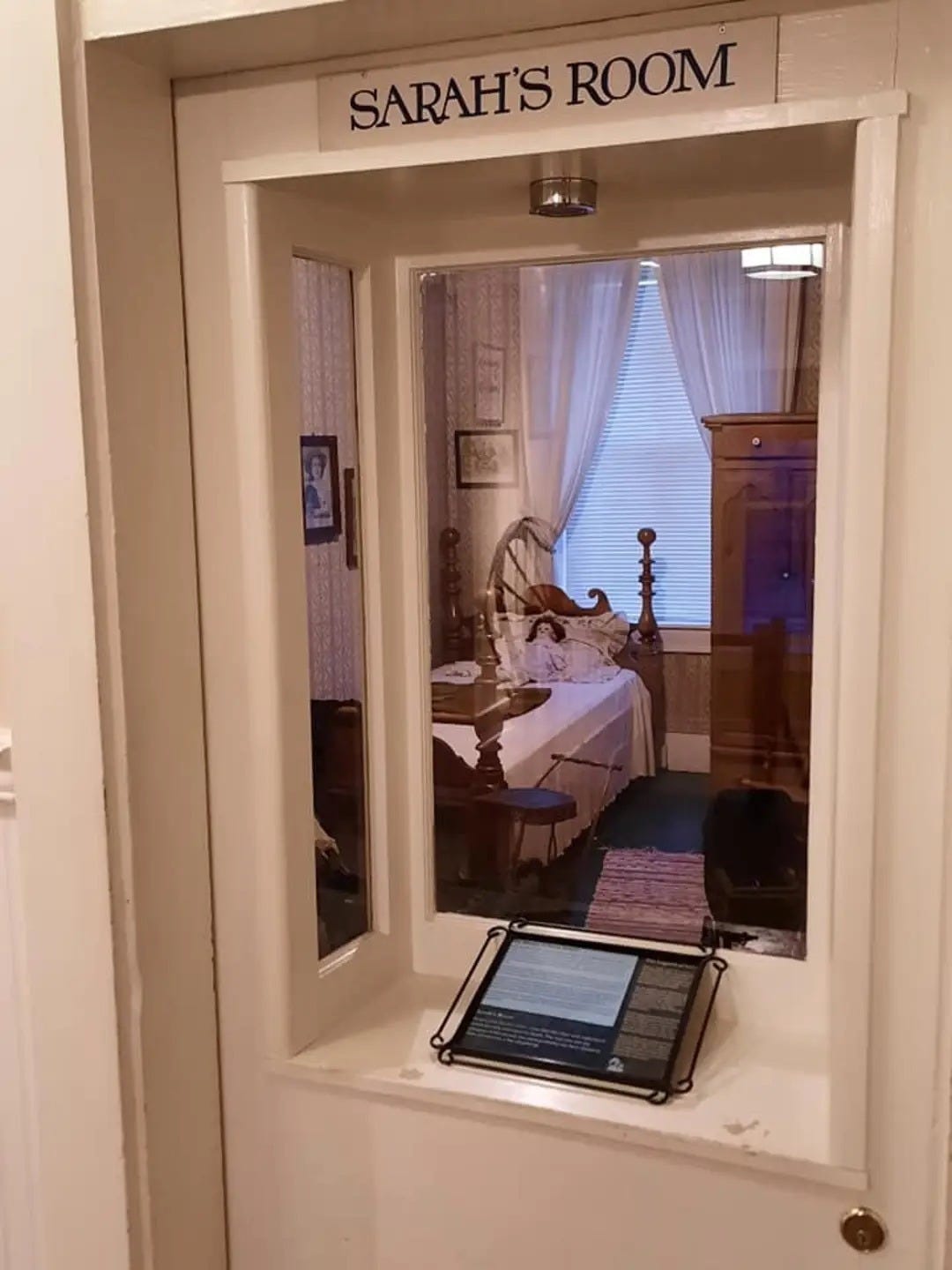Halloween is the time of year when we are exposed to some of the things that frighten us most. Whether it be spider decorations or clown costumes, there is a chance for everyone to encounter one of their phobias. A few months back on social media, I posted a picture from our visit to the Pioneer cemetery showing a couple dolls that were on a grave. It stirred a startled response from some of my friends.
What is it about dolls that can be so creepy? To prepare for this post, I watched the 1995 horror film anthology Tales from the Hood. In one part, a set of dolls wreaks vengeance on a slimy politician housed in a former plantation. These particular dolls did not scare me as I could sympathize with their cause.

The uncanny valley
It turns out a Japanese roboticist named Masahiro Mori actually coined a phrase for this phenomenon in a 1970 essay, the uncanny valley. It is defined as a “psychological phenomenon that describes the feeling of unease or discomfort that people experience when they encounter an object that is almost human but not quite.”1
I have known people in my personal life who have expressed a fear of dolls. I don’t have an outright phobia of them myself, however when I unexpectedly encounter one, I do think there is kind of a knee jerk reaction to their faces that would align with this idea of the uncanny valley. For Halloween, I will share the story behind some dolls I have encountered that were pictured in our previous Silent Sod posts.
Rachael Totten and the dolls of the Pioneer Cemetery
Back in July, my sister, Sarah, and I visited the Pioneer Cemetery in Cincinnati to search for graves of individuals who were involved in the Revolutionary Era. The day was a little gloomy and mostly quiet. Sarah had gone to a different part of the cemetery, and I came across a grave with two dolls seated in front. Was I frightened? I wouldn’t necessarily say so, but I remember my heart dropping a little at the initial sight of them and wondering, “what is this all about?”
The grave of Rachael Totten
John Totten, a veteran of the First Ohio Militia in the War of 1812, and his wife, Jane, had a daughter named Rachael in 1829. Rachael lived to be seven years old, missing her eighth birthday by just a few days. Death at such a young age unfortunately did not seem to be an anomaly in her family. Out of her and her seven siblings buried nearby, only three appeared to live past the age of ten.
Rachael’s cause of death in 1837 is not listed in genealogical records. The most common causes of child mortality from 1800 to 1870 were tuberculosis, diarrhea of infancy, bacillary dysentery, typhoid fever, and the highly contagious diseases of childhood, especially scarlet fever, diphtheria, and lobar pneumonia. Between 1830 and 1840, there was also a rise in scarlet fever that contributed to a lot of children’s deaths, making it the leading cause of death in children in 1840.2
We can’t know at this point what caused Rachael’s death. It is interesting, though, to think of who one hundred and eighty-seven years after her death put forth the effort to place these dolls at her grave. Perhaps it was a descendant of one of her siblings or a visitor to the cemetery who was moved by the significant losses experienced by the Totten family.
Sarah Stubbs, Eliza Clay, and the Golden Lamb
I mentioned in a prior Silent Sod post that once a year around Christmas time my family goes to the Golden Lamb and I like to do what I call “ghost hunting” on the upper floors where historic figures have stayed. There is a room that is named for Sarah Stubbs, a former inhabitant of the Golden Lamb. Sarah was the niece of Albert Stubbs, the person who ran Golden Lamb at the time she lived there.3
A doll lies on the Sarah’s bed. After so many years of seeing this doll, I do not experience any level of shock or fear when I happen upon it, but I have heard others commenting on the creepiness of it at first sight during my tours. Another part of the eeriness that can play into the doll is that there have been reports of the spirit of a little girl haunting the inn. While Sarah went on to be married and lived on to the old age of seventy-nine, there is the possibility that the death of her father that happened during her childhood could theoretically bring her spirit back to the inn.
The fatal visit of Henry Clay’s daughter Eliza Clay
There is another haunting possibility involving a story of a young girl who stayed at the Golden Lamb. Henry Clay, a U.S. Senator and the secretary of state for John Quincy Adams, stopped at the Golden Lamb in 1825 when he was traveling to Washington D.C. after his daughter Eliza came down with illness.4 She ended up dying at the inn, her cause of death being typhoid fever, an inflammation of the bowels caused by ingesting contaminated food or water.5

Is it the creepiness of the doll itself that stands out to Golden Lamb visitors or is the energy of the tragedy of these two stories somehow channelled into the doll?
Both Rachael and Eliza’s fates speak to the fragility of life for children living in the 1800’s before scientific advancements in the treatment of infectious disease allowed for improvements in life expectancy.
https://www.goldenlamb.com/news/does-the-golden-lamb-have-ghostly-uninvited-guests/
https://www.goldenlamb.com/news/spooky-stories-of-the-golden-lamb/
https://www.wchsmuseum.org/uploads/1/2/6/5/126559441/historicalog_aug_2016_compressed.pdf








Interesting stuff. If I can find the picture I will show you an iron gate in Atlanta with creepy dolls all over it
This post is reminding me of a children's lot in the Decatur Cemetery where someone used to leave small toys on all the graves like rubber ducks.